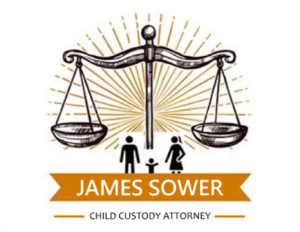Top Reasons for Divorce in California (2023)
California is no stranger to divorce. According to a recent analysis, nearly 1 in 3 marriages in the state end in divorce. In recent years, the number of divorces in California has increased for several reasons.
So, let’s examine the most common causes of divorce in California in 2023. From financial pressure to emotional stress, we’ll cover the top contributors that lead to divorce in the state.
Understanding the divorce process in California
Understanding the divorce procedure in California could help reduce some of the anxiety associated with the process. The Family Court system is primarily used to resolve divorces in the state of California.
Divorce proceedings begin with the filing of a divorce petition, which sets forth the grounds for divorce and requests custody of minor children, alimony, and equitable distribution of marital property.
The next step is for both parties to exchange financial information and participate in mediation in an effort to establish a compromise. If an agreement cannot be reached, the matter may go to trial. If you want to preserve your rights and interests throughout the divorce process, you should speak with a family law attorney.
Factors that lead couples in California to separate
The state of California has a notoriously high divorce rate and there are several common causes of divorce there. Divorce is often attributed to a combination of strained communication, lack of closeness, and gradual distancing. Infidelity and financial stress can also play a key role in marital failure.
Factors such as unrealistic expectations, unresolved disputes, and incompatibility of goals can play a role. Keep in mind that every divorce has its own set of specific challenges. Knowing the most common causes of divorce can help couples resolve their problems before they reach breaking point.
Infidelity and its impact on California divorces
Marriages in California can be seriously damaged by infidelity. One’s trust can be shattered and their feelings seriously hurt when they discover that their lover has been unfaithful. Many courts may consider adultery a crime serious enough to justify divorce.
It is not uncommon for betrayal to cause irreparable damage to a marriage. It can cause difficult to shake feelings of betrayal, anger and resentment. Research shows that infidelity is one of the leading causes of divorce in California, despite the importance of trust and loyalty.
Financial problems leading to divorce in California
One of the main reasons couples in California decide to separate is because of money problems. Marriages can be seriously affected by financial difficulties, which can lead to tension, arguments and discontent. Financial problems, such as excessive debt or inconsistent spending habits, can create a stressful and unpleasant atmosphere.
Incompatible financial priorities, lack of trust, and lack of communication can contribute to the demise of a relationship. Money problems can be avoided as a major cause of friction in a relationship by seeking financial advice and talking openly about money.
Irreconcilable differences: a major reason for divorce in California
In California, irreconcilable differences are a common cause of divorce. The phrase “marital dispute” is used when a couple has serious arguments but cannot find a solution to their problems.
Values, lifestyles, and long-term goals are potential sources of discord. When spouses cannot see eye to eye and disagree, the distance between them can lead to animosity, frustration, and eventually divorce.
Although every divorce is different, it is usually due to irreconcilable disagreements between spouses. It highlights the value of open lines of communication and mutual accommodation in maintaining peace in a partnership.
Child Custody Battles in California Divorces
For all concerned, child custody disputes in California divorces can be a difficult and stressful experience. Child custody disputes are often contentious and time-consuming to resolve in court.
During these conflicts, it may be relevant to consider the best interests of the child, the parents’ ability to create a stable home, and any history of abuse or neglect.
Parents must put their children’s needs first and find a solution that is best for their children. It may be advantageous to seek legal advice and professional assistance when addressing this delicate part of a divorce in California.
Top Reasons for Divorce in California (2023)
1. Financial Stress: – One of the main reasons for divorce in California in 2023 is financial stress. Financial management can be a source of stress in relationships due to the rising cost of living and financial problems. This could lead to misunderstandings, hurt feelings, and a loss of trust. Different financial goals, incompatible spending styles, and other sources of financial stress can have a devastating effect on a couple’s relationship.
2. Lack of Communication: Lack of communication continues to be one of the leading causes of divorce in California. Misunderstandings and animosity can fester over time when partners do not express their wants, needs, and concerns to each other. Because of this, couples may distance themselves from each other and break up their relationship.
3. Infidelity: – The most common cause of divorce in California is extramarital affairs. Infidelity destroys trust, which is crucial to a good relationship, and can take years to recover. Infidelity emotionally damages a relationship, making it difficult to repair.
4. Irreconcilable differences: – Irresolvable conflicts can put pressure on marriages and ultimately lead to divorce. Values, ways of life, and long-term goals may be fundamentally at odds with each other. Relationships can be difficult to maintain when partners are unwilling to compromise and find areas of agreement.
5. Breaking Up: It’s not unusual for couples to break up as they face the challenges of adulthood together. Couples may feel like they are no longer compatible or emotionally bonded if one or both partners go through a major life transition, such as a change in hobbies, employment, or personal development. This feeling of separation could play an important role in your decision to file for divorce.
These top causes of divorce in California in 2023 are a sobering reminder of how difficult it can be for many married people to stay together. Couples who recognize these issues early on, get counseling if necessary, and work to improve their ability to talk to each other and find common ground can save their relationships from the brink of divorce.
Ending!
The number of divorces in California is increasing and there are many different reasons why marriages end. There are numerous obstacles that couples must overcome on the path to a happy and successful relationship, including communication difficulties, adultery, financial tensions, and irreconcilable differences.
Recognizing these typical causes of divorce can help couples resolve their issues and get the support they need to keep their marriage together. Building a lasting relationship requires giving equal weight to honesty, trust and commitment. Keep in mind that getting outside help can be a big problem if you want to figure out how to get through a divorce without destroying yourself or your children.












